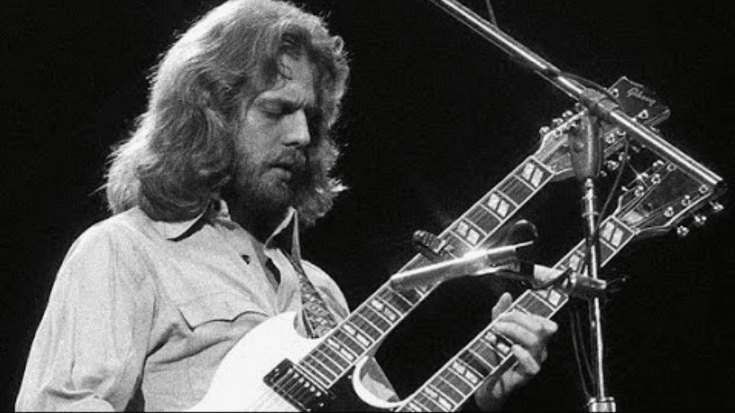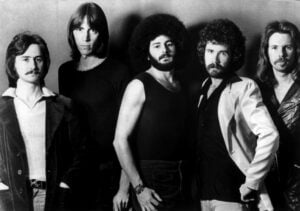8 Most Controversial Rock Breakups

via The Real Music Observer / YouTube
Rock and roll has a rich history filled with groundbreaking music and legendary bands. Along with the glory, however, have come dramatic splits, legal battles, and lasting feuds. Here are eight controversial breakups in classic rock that left a significant mark on music history.
1. The Beatles
The Beatles, often considered one of the greatest bands of all time, disbanded in a storm of disputes in 1970. After years of producing some of the most influential music in history, internal tensions boiled over. Personal differences, business struggles, and creative disagreements among John Lennon, Paul McCartney, George Harrison, and Ringo Starr became unmanageable.
Notably, the role of their new manager, Allen Klein, after the death of Brian Epstein, led to further divide. McCartney’s decision to release a solo album without consulting his bandmates was another key issue. While their breakup shattered the hearts of fans worldwide, it also signaled the start of four successful solo careers.
2. The Eagles
The Eagles’ split in 1980 was as dramatic as their harmonious hits. Their breakup stemmed from continuous disagreements and a growing disconnect among members. Tensions came to a head during a benefit concert for Senator Alan Cranston, where guitarist Don Felder and singer Glenn Frey had an intense argument.
After the show, the band members went their separate ways, each pursuing solo careers. Their break was characterized by a mix of personal enmities and professional conflicts, which made it seem unlikely that they would reunite. Yet, the Eagles eventually came back together in 1994 with their appropriately titled “Hell Freezes Over” tour.
3. Fleetwood Mac
Fleetwood Mac’s breakup in 1987 was as chaotic as their music was harmonious. Known for their complex relationships, the band dealt with multiple romantic entanglements, which led to a tangled web of emotions and conflicts.
Lindsey Buckingham’s departure was a major shaking point. His decision was influenced by growing personal tensions and creative differences with the other members, particularly Stevie Nicks. Despite the turmoil, the band continued to perform, though with various lineup changes, highlighting their resilience and enduring popularity.
4. Pink Floyd
Pink Floyd’s breakup in the mid-1980s was marked by internal discord and legal battles. The friction primarily involved Roger Waters and David Gilmour. Waters, a founding member, decided to leave due to growing creative differences and frustrations over the band’s direction.
Upon his departure, Waters attempted to legally dissolve the band, which brought about a lengthy court battle. Gilmour, however, believed Pink Floyd could and should continue without Waters. The legal disputes and personal animosities made it one of the most contentious breakups in rock history, casting long shadows over their legacy.
5. The Police
The Police called it quits in 1984 during the height of their fame. The trio of Sting, Andy Summers, and Stewart Copeland produced globally popular hits, but behind the scenes, things were far from harmonious. Sting’s growing desire to pursue a solo career became a major point of contention.
Additionally, the band members frequently clashed over creative decisions and personal differences. These mounting tensions made collaboration increasingly difficult, ultimately leading Sting to focus on his solo work. Their final performance before the initial breakup was marked by a sense of finality, though they would later reunite for tours.
6. Creedence Clearwater Revival
Creedence Clearwater Revival’s dissolution in 1972 was heavily influenced by internal turmoil. Frontman John Fogerty’s leadership style led to friction with his bandmates, including his brother, Tom Fogerty. The other members felt overshadowed and unappreciated, which created a growing rift.
The band’s tension reached an apex during their final album, “Mardi Gras,” where songwriting and vocal duties were divided among all members for the first time. The uneven success of the album underscored their issues, resulting in the eventual disbandment and leaving a legacy plagued by disputes and legal battles.
7. Guns N’ Roses
Guns N’ Roses experienced a turbulent breakup in the mid-1990s. Once celebrated for their rebellious spirit and powerful music, the tensions between lead singer Axl Rose and guitarist Slash reached a breaking point. The disputes over the band’s musical direction and personal lives became overwhelming.
Axl Rose’s increasing control over the band and clashes with other members led to departures and legal issues. By 1996, the band’s classic lineup had effectively fallen apart, leaving fans mourning the end of an era. Despite these issues, their legend continued to grow, with a reunion of sorts occurring years later.
8. The Who
The Who, known for their explosive performances and innovative music, faced a significant breakup in 1983. Pete Townshend’s struggle with substance abuse and personal challenges played a substantial role. The pressures of maintaining their status while dealing with internal issues became too much.
The strained relationships, particularly between Townshend and Roger Daltrey, contributed to their decision to part ways. Each member pursued solo careers, though the band’s influence remained. Their 1989 reunion showed that while they had drifted apart, the spirit of The Who could still resonate strongly with fans around the world.





















